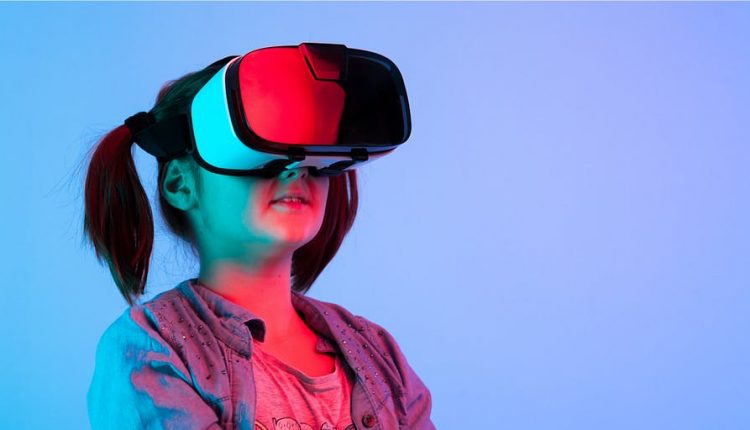VR Isn’t a Novelty: Right here’s The right way to Combine it Into the Curriculum
For the past several years, Washington Leadership Academy students have practiced their French while walking the streets of Paris, applying for elected positions, and visiting the Hogwarts campus. 99 percent of the students at the charter school are not white, 88 percent are considered to be economically disadvantaged.
While the Washington Leadership Academy’s experiment with virtual reality technology in K-12 education is largely unusual, it does reflect the potential of virtual reality to offer students the kind of learning opportunities that were once only available to their more affluent counterparts .
While the application of VR to core academics is still emerging, early results are promising: research now suggests that students can retain more information and better synthesize and apply what they have learned after participating in virtual reality exercises.
And technology is within the reach of class teachers. While virtual reality was once considered high-end and unaffordable, it is becoming more and more affordable. Discovery VR and Google Expeditions offer various virtual reality experiences for free. Simple VR viewers now come in relatively inexpensive DIY cardboard view boxes like Google Cardboard that fit a range of VR-enabled smartphones.
As the cost of VR headsets goes down, the cost of frequent virtual excursions can in many cases soon be lower than the cost of a single excursion or a guest speaker.
Still, teachers may not be sure how to implement this cutting-edge technology in their classrooms. Your concerns are well founded. Virtual reality requires careful planning and implementation for success. It’s not just plug and play technology. The development also takes a lot of work.
Real learning with VR
Two years ago I worked with a team of educators to create a virtual learning simulation for my company’s summer camp. The aim was to give the students the opportunity to enter their dream job – surgical medicine – years before they could otherwise have done it. Our journey to plan, build, test, and fully implement VR in our summer program was ultimately successful – and we learned some important lessons in the process:
Content is king
The success of virtual reality based learning depends on the depth and richness of the content. The translation of teaching material into a VR simulation is far more complex than expected. In our case, a team of six developers logged almost 1,000 hours of development time to create just 10 minutes of simulation.
My team decided to create a simulation where a “patient” has an injury to the abdomen from falling on a glass coffee table, and the learners need to work together to clean, staple and bandage the wound .
It was similar to an exercise we’d done for years in an analog setting, but which took a whole new level of depth to translate into a VR context. That’s why we consulted with both subject matter and technology experts to ensure our simulation is engaging and immersive while focusing on our learning goals.
New to you New to you
We found that proven approaches to teaching are just as effective with new technology as with more traditional approaches: tell students what they are going to do, tell them what they are doing, and tell them what they have done. Don’t expect your digital-native students to be ready to simply pick up a VR headset and succeed in a simulation.
This starts with the students becoming familiar with the technology. If students are involved in their first simulation without proper preparation, there are many headaches (sometimes literally – safety glasses need to be adjusted).
Our medical VR exercise starts with an introductory tutorial conducted in an empty white room with just a table in front of the virtual user. The original goal is to introduce learners to the virtual space and buttons on their Oculus Touch controllers. Once students have completed their tutorial, they will have the option to press a button that will transport them to the operating room.
In our case, each 10-minute virtual exercise was supported by more than an hour of lessons to prepare students for the activity and to deepen what they had learned.
The facilitator spent the first 15 minutes of the class discussing the educational benefits of virtual reality and helping students try out the equipment. After the exercise, the student groups met for a debriefing that encouraged them to reflect on their experiences.
Integrate, not add
We have taken steps to review how the VR experience complements and fits into the other teaching and learning activities in our program. Our thought was that students would treat it as less valuable when viewed as separate and additive. So we applied skills we had built at the beginning of the program to VR lessons and upgraded the skills our students learned in the operating room to make them more successful in later activities.
We used our first VR exercise as an arrival day activity to get students excited about medicine and familiarize them with basic surgical functions. The remainder of the program focused on the key insights from the VR lesson.
After our first year of piloting the simulation, we added a second exercise halfway through our program that complemented a trip to the trauma center of a local hospital and a series of lessons on physical fracture fixation. The exercise enabled the students to apply the medical theories they learned during these lessons to the broken long bones of a virtual “patient”.
By leveraging the latest advances in technology, expertise, and care for each student’s experience, educators can transform VR from a fun classroom gimmick into a tool that helps all students experience active, experiential, and personal learning.


Comments are closed.